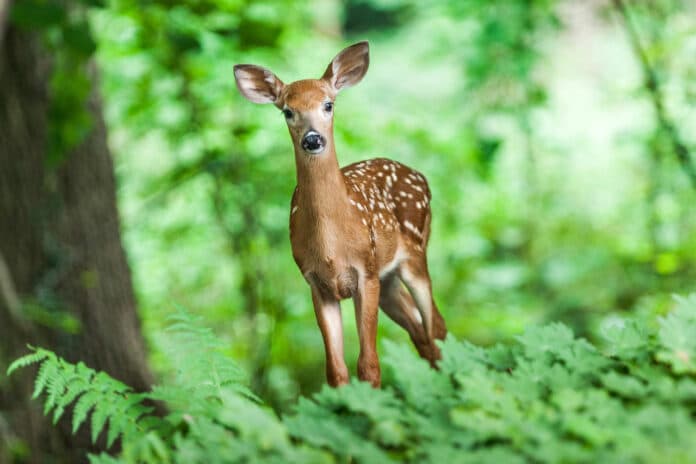Agricultural and pastoral landscapes can provide important habitats for wildlife conservation, but sharing these landscapes with wildlife can create conflict that is costly and requires managing. Livestock predation is a prime example of such conflicts, requiring effective management strategies that minimize human-wildlife conflict while preserving valuable agricultural resources.
In a new study, U.S. researchers have explored the integration of robotics and agricultural practices to develop more efficient predator deterrents.
The study capitalized on the concepts of robotics, specifically automated movement, and adaptiveness, to enhance the effectiveness of predator deterrents. Researchers used a model system using a colony of captive coyotes and simulated predation events with meat baits both inside and outside of protected zones.
Inside the protected zones, the researchers utilized a cutting-edge, commercially available predator deterrent, the Foxlight, mounted on a remote-controlled vehicle. The study tested three deterrents – light only, without movement or adaptiveness; predetermined movement, with movement but without adaptiveness; and adaptive movement, incorporating both movement and adaptiveness.
They measured the time it took for coyotes to eat the baits and analyzed the data with a time-to-event survival strategy. Survival of baits was consistently higher inside the protected zone, and the three-movement treatments incrementally increased survival time over baseline except for the light-only treatment in the nonprotected zone. Incorporating predetermined movement essentially doubled the efficacy of the light-only treatment both inside and outside the protected zone. In addition, incorporating adaptive movement exponentially increased survival time both inside and outside the protected zone.
The study provides compelling evidence that integrating existing robotics capabilities can significantly enhance the protection of agricultural resources and contribute to the development of nonlethal tools for managing wildlife. The findings also demonstrate the importance of combining agricultural practices with new technology to improve the efficacy of wildlife deterrents.
The integration of robotics into agricultural practices offers a promising path toward sustainable coexistence and the preservation of biodiversity.
The study involved scientists from the USDA National Wildlife Research Center, the Center for Human-Carnivore Coexistence at Colorado State University, The Society for the Preservation of Endangered Carnivores and their International Ecological Study, the Paul G. Allen School of Computer Science and Engineering, University of Washington, and Krebs Livestock.
Journal reference:
- Stewart W. Breck, Jeffrey T. Schultz, David Prause, Cameron Krebs, Anthony J. Giordano, Byron Boots. Integrating robotics into wildlife conservation: testing improvements to predator deterrents through movement. PeerJ, 2032; DOI: 10.7717/peerj.15491
